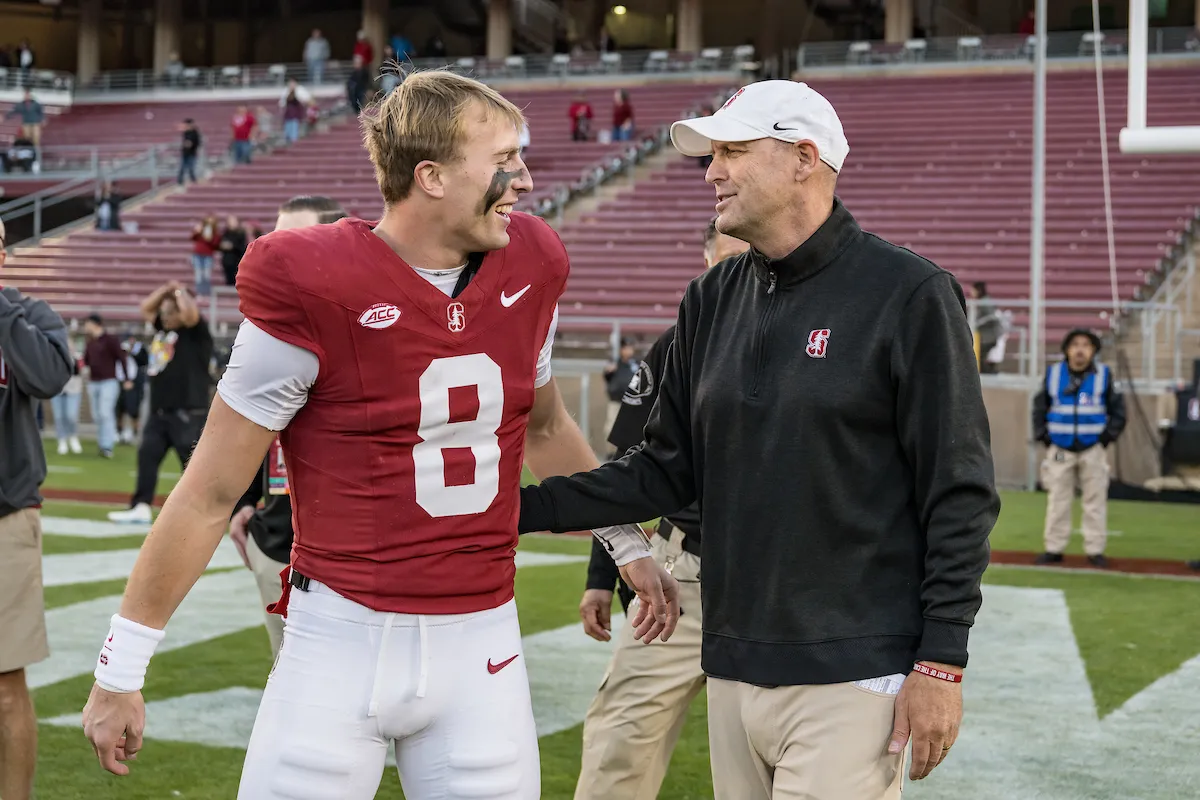Stanford football’s 59-28 loss to NC State a few weeks ago may have been the breaking point for many fans during the Troy Taylor era, despite the team’s recent upset win over Louisville. The former Cal quarterback and Sacramento State head coach has struggled to make an impact, holding a dismal 6-16 record at the helm of the Cardinal football program. Even a Big Game victory is unlikely to rekindle enthusiasm among the Cardinal faithful.
While Taylor himself has not demonstrated the ability so far to right the ship, Stanford fans are also rightfully pointing a finger at the athletic administration for the program’s demise.
Since student-athletes gained the ability to profit from their name, image, and likeness (NIL), Stanford’s administration has approached the new pay-for-play era with notable caution. The University only endorsed its NIL collective, Lifetime Cardinal, in April. Additionally, Stanford has maintained restrictive policies regarding the transfer portal, further complicating head coach Taylor’s job. As a result, he has relied heavily on true freshmen this season.
The University has yet to clarify its stance on revenue sharing or how it plans to distribute revenue among its athletic programs. The Daily has reached out for comment.
These factors have left Stanford football in a state of uncertainty about its future. However, the most pressing question remains unanswered: By what standards should we evaluate the Stanford athletic department?
With the upcoming revenue-sharing requirements stemming from the House v. NCAA settlement, it is crucial for those in charge to provide a clear answer to this question.
The impact of Olympic sports at Stanford is unparalleled. The University dominated the 2024 Paris Olympics, earning the most medals of any institution and far outpacing the competition. This success has given Olympic sports a level of prestige at Stanford that is unmatched elsewhere in the country. Furthermore, the University’s decision — and eventual reversal of that decision — to cut 11 sports in the summer of 2020 highlighted the significant political influence many of these programs hold within Stanford.
This influence, however, could potentially result in these sports receiving a disproportionate share of the revenue.
As the last few years have made clear, football remains king across college sports. A program’s prospects for conference realignment are largely determined by the strength of its football team.
If Stanford decides to give football less revenue than its peers across the country, then it’s going to put itself at an even further disadvantage. And if the ACC dissolves, then where would Stanford land in that case? They won’t be attractive to the Big Ten, Big 12 or SEC, which would be the main conferences that have the revenue to support our thriving Olympic sports programs.
The athletic department can no longer be judged solely by the number of Directors’ Cups it wins. While Stanford excels in many non-revenue sports, thanks in part to limited professional opportunities in these fields and the university’s world-class education, this metric no longer reflects the realities of college athletics today.
In the era of NIL, conference realignment and revenue sharing, the primary measure of success should be the performance of revenue-generating sports—particularly football. By this standard, Stanford’s athletic department has fallen short in recent years, as both the football and men’s basketball programs have deteriorated under the current administration.
The critical question now is how Provost Jenny Martinez and President Jonathan Levin ’94 will evaluate the department’s trajectory.
Stanford’s best hope of maintaining a competitive power-conference football program — and by extension, preserving the rest of its athletic department — depends on Martinez and Levin recognizing the decline of football and men’s basketball despite the department’s continued dominance in the Directors’ Cup standings. Without a clear-eyed assessment of these issues, Stanford risks losing its power-conference status entirely, allowing the illusion of success to mask the underlying challenges.
